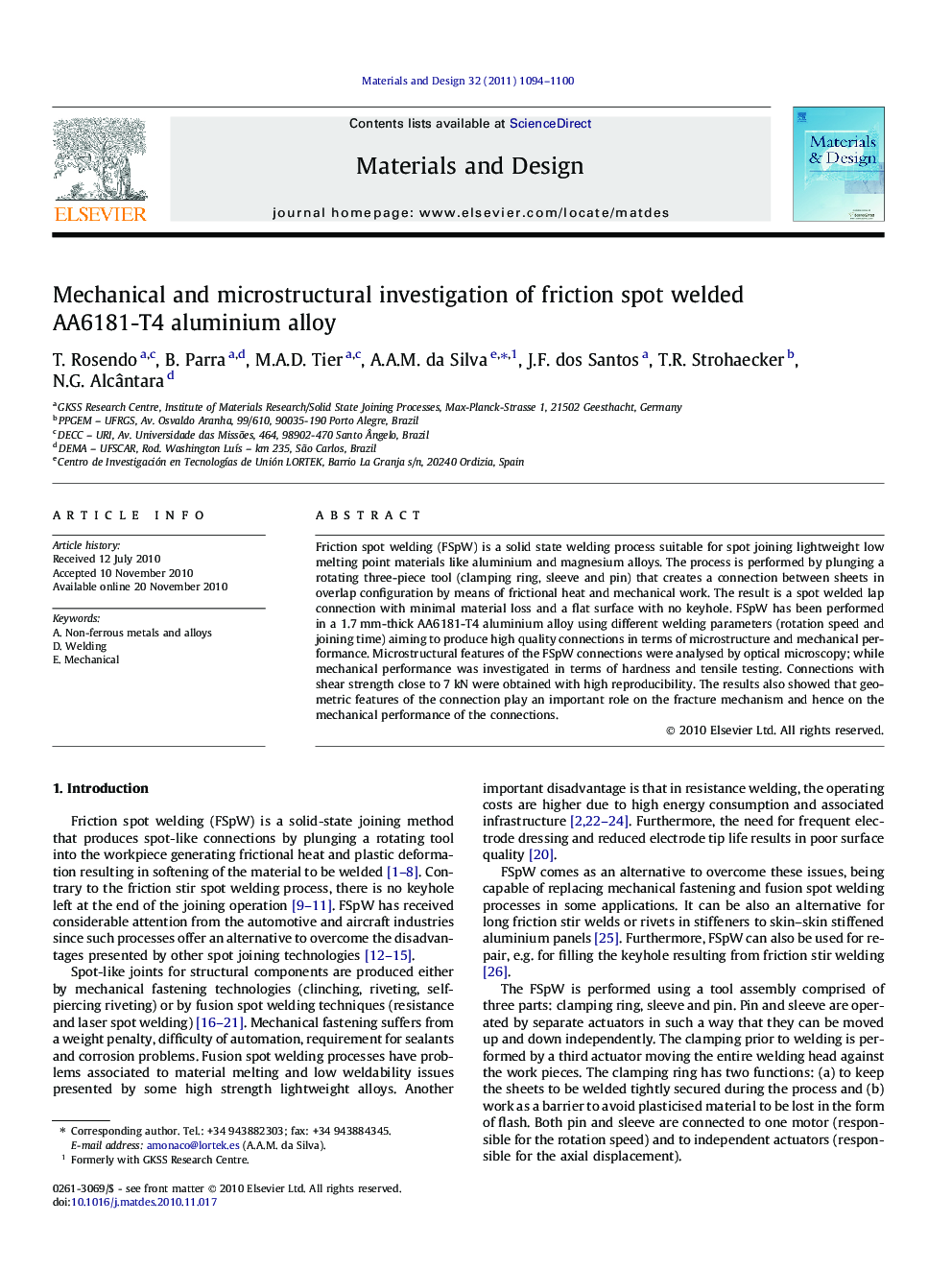| Article ID | Journal | Published Year | Pages | File Type |
|---|---|---|---|---|
| 831406 | Materials & Design (1980-2015) | 2011 | 7 Pages |
Friction spot welding (FSpW) is a solid state welding process suitable for spot joining lightweight low melting point materials like aluminium and magnesium alloys. The process is performed by plunging a rotating three-piece tool (clamping ring, sleeve and pin) that creates a connection between sheets in overlap configuration by means of frictional heat and mechanical work. The result is a spot welded lap connection with minimal material loss and a flat surface with no keyhole. FSpW has been performed in a 1.7 mm-thick AA6181-T4 aluminium alloy using different welding parameters (rotation speed and joining time) aiming to produce high quality connections in terms of microstructure and mechanical performance. Microstructural features of the FSpW connections were analysed by optical microscopy; while mechanical performance was investigated in terms of hardness and tensile testing. Connections with shear strength close to 7 kN were obtained with high reproducibility. The results also showed that geometric features of the connection play an important role on the fracture mechanism and hence on the mechanical performance of the connections.
Research highlights► High strength spots associated to intermediate joining times when coupled with low RPM. ► Hooking plays an important role in the fracture mechanism of the FSpW spots. ► Energy input showed strong influence on the presence of weld defects.
